Coronavirus class divide: the jobs most at risk of contracting and dying from Covid-19
As Brits begin heading back to work, some are facing far greater health risks than others
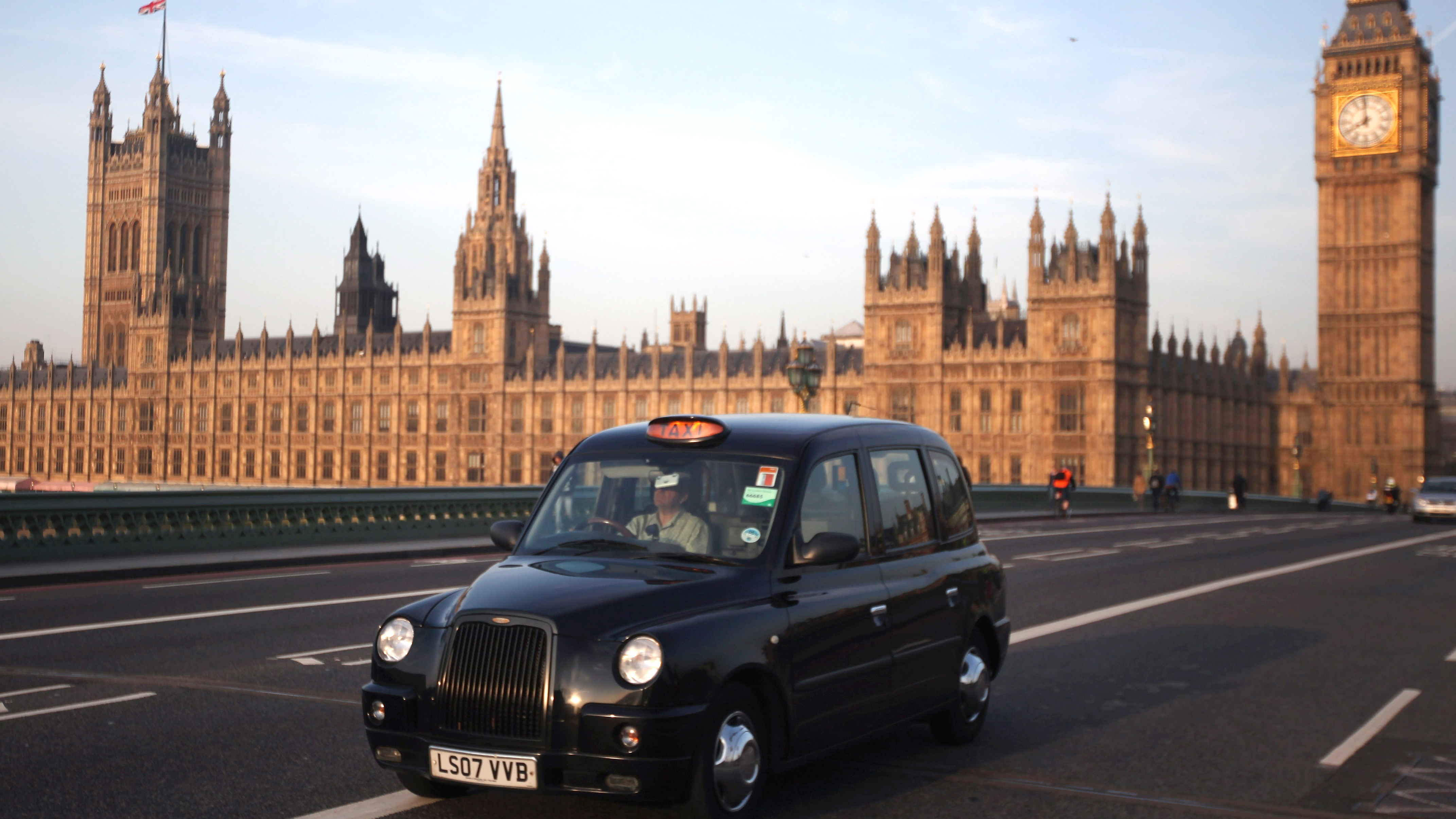
Mark Williams, reader in the School of Business and Management, Queen Mary University of London, on the class divides laid bare by the coronavirus crisis.
We often hear that Britain is a “class-based society”. Ask people what class is and you’ll get a wide range of answers – from accent to cultural tastes – leaving you perplexed as to how it might ever be a useful construct to understand much about the realities of British life. But really it’s all about what job you do.
I study the relationship between a person’s class and their life chances and it has become glaringly apparent during the coronavirus crisis that class – what job you do – has never been more important.
The Week
Escape your echo chamber. Get the facts behind the news, plus analysis from multiple perspectives.

Sign up for The Week's Free Newsletters
From our morning news briefing to a weekly Good News Newsletter, get the best of The Week delivered directly to your inbox.
From our morning news briefing to a weekly Good News Newsletter, get the best of The Week delivered directly to your inbox.
There is a clear class divide in the COVID-19 death rate, with working class jobs such as carers, taxi drivers, security guards and retail assistants clearly worse affected than middle and upper class jobs who can much more easily self-isolate and work from home.
Analysing data released by the Office for National Statistics (ONS) on registered deaths in England and Wales among people aged 20 to 64, up to and including April 20, I find a sharp divide between the fraction of deaths in managerial and professional occupations and routine and manual occupations.
While routine and manual occupations account for around 34% of jobs, those working in such jobs account for more than 43% of Covid-19 deaths among those of working age. Conversely, managerial and professional occupations account for 43% of all jobs but 28% of these deaths so far.
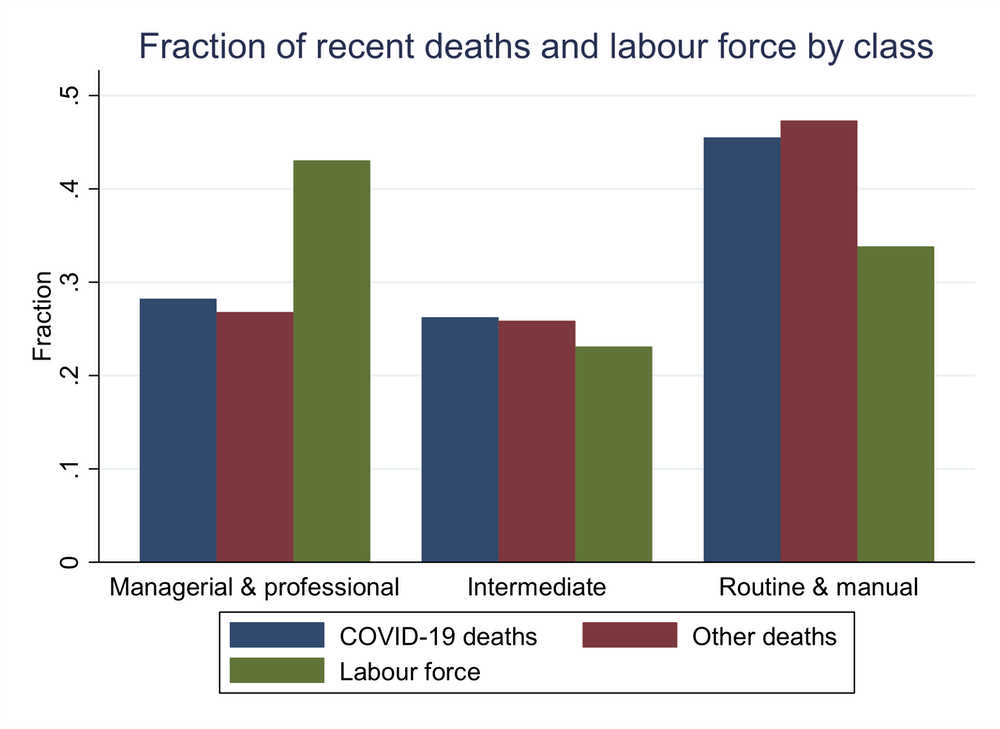
Author’s analysis of Office for National Statistics data. England and Wales aged 20 to 64 only. Mark Williams, CC BY-ND
A free daily email with the biggest news stories of the day – and the best features from TheWeek.com
Digging further into the detail makes very tragic reading. The deaths are highly concentrated in occupations that have been working on the frontline: caring and health, delivery workers, drivers and those working in retail.
Of the 369 occupations listed by the ONS, just five account for 17% of Covid-19 deaths among those of working age in England and Wales. Just ten occupations account for 27% of these deaths, with 20 accounting for 40% (only 20% of people work in these 20 occupations).
These jobs are also overwhelmingly manual and routine occupations - those carried out by the economically least advantaged. While the class divide in Covid-19 deaths is not wholly out of sync with the divide in non-Covid deaths, these figures are a powerful reminder that what you do quite literally determines your life chances.
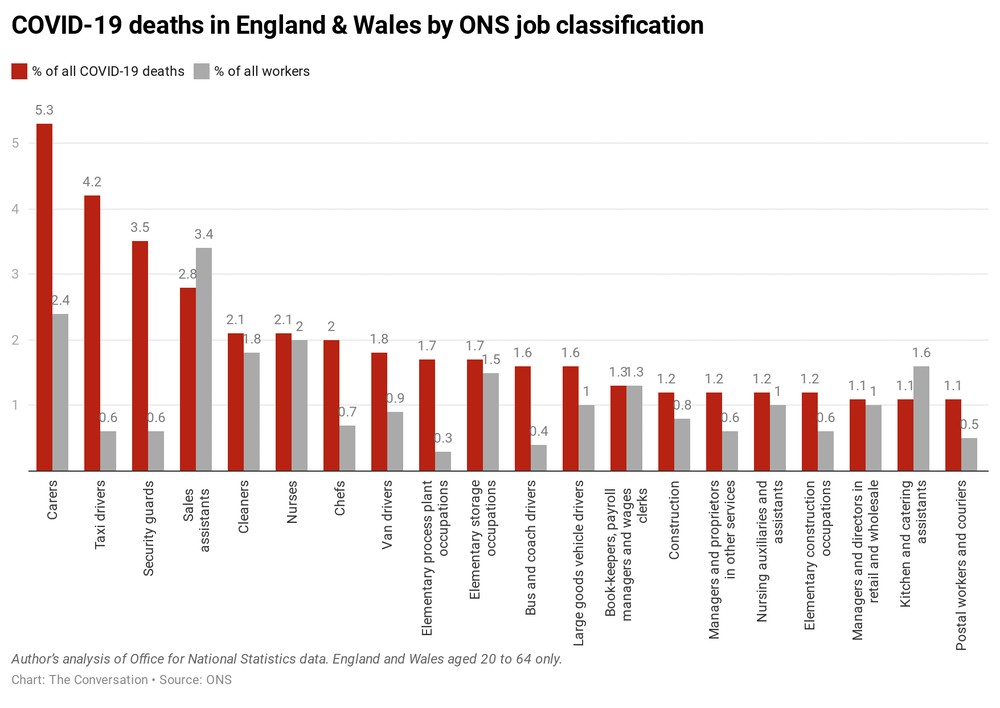
Author’s analysis of Office for National Statistics data. England and Wales aged 20 to 64 only. Mark Williams, CC BY-ND
Impact of easing lockdown
Workers who cannot work from home can now return to their workplaces. This will clearly affect classes differently. Around 75% of managerial and professional workers will almost certainly carry on working from home because they can.
By contrast, a similar proportion of routine and manual workers will most likely be back at their workplaces. According to my analysis of ONS data, these are occupations where less than 10% have ever worked from home.
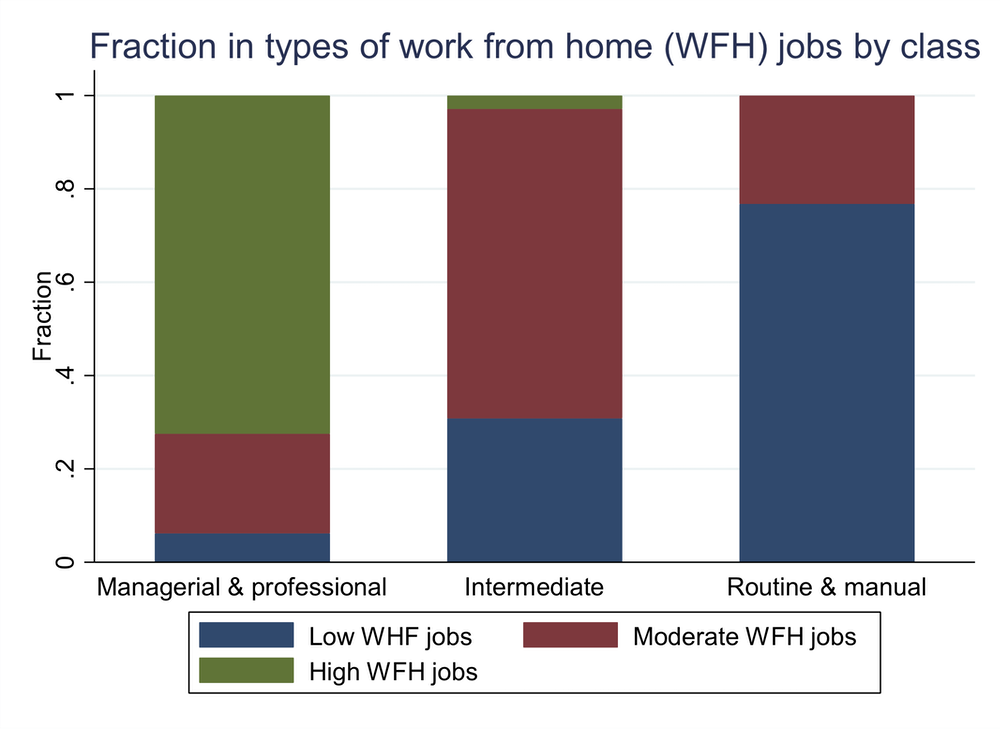
Author’s analysis of ONS data. England and Wales aged 20 to 64 only. Mark Williams, CC BY-ND
One way to get a handle on the class dimension of the risks of going back to work is by using recent statistics published by the ONS on occupational exposure to infectious diseases and proximity to others at work. The first indicator in the graph below (blue bars) shows those in routine and manual occupations are most likely to be exposed to infectious disease in their job.
The second indicator (red bars) shows these workers are also most likely to work in close proximity to others, making social distancing measures more difficult.
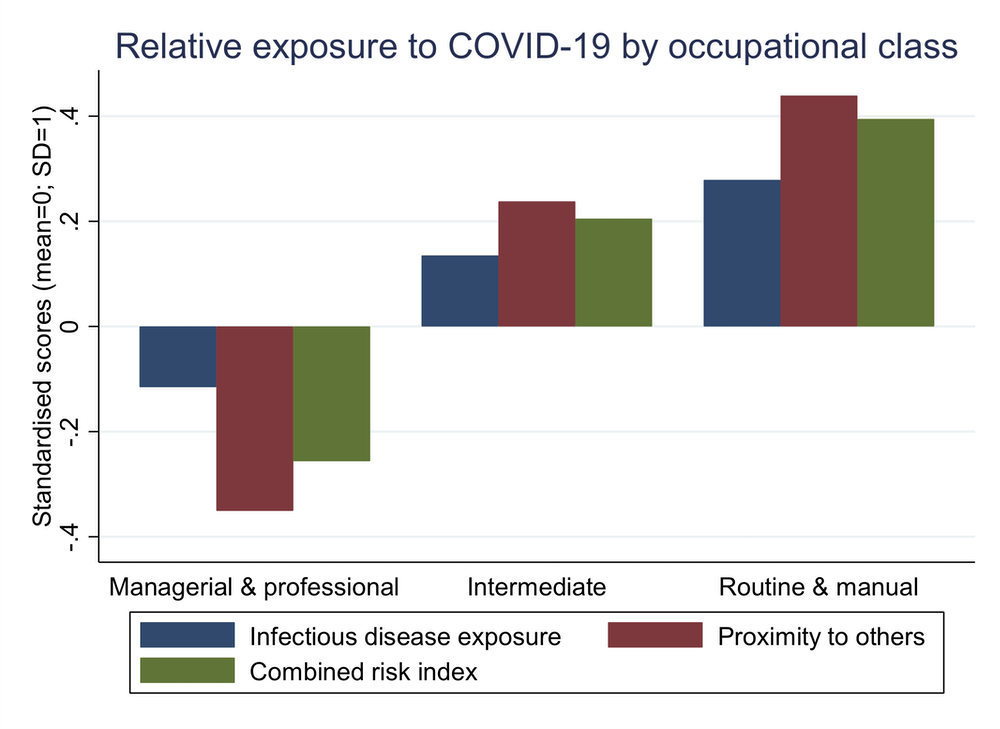
Author’s analysis of ONS data. This uses pre-pandemic data and does not reflect changes made since. Mark Williams, CC BY-ND
Combining these two indicators to form an overall risk index (green bars) reinforces the pattern that those workers being told to go back to work are also most vulnerable to infection at work. By contrast, managerial and professional occupations are less at risk – with some notable exceptions, such as those related to health like medical practitioners, nurses and dentists.
–––––––––––––––––––––––––––––––For a round-up of the most important stories from around the world - and a concise, refreshing and balanced take on the week’s news agenda - try The Week magazine. Start your trial subscription today –––––––––––––––––––––––––––––––
What is more, routine and manual jobs are the lowest paid, have the poorest sick pay and other workplace benefits and are the most insecure. But this predates the coronavirus crisis – class inequalities in conditions of employment have been becoming more entrenched over the past four decades.
What Covid-19 does is accelerate the impact of these class differences and throw the issue into stark relief. Reorganising workplaces to enable social distancing will likely be the most challenging and least effective in those jobs being told they can go back to work.
They are also most at risk to infection, as well as being the ones needing to go back to work the most to make ends meet. What kind of job you have has never been more important for your life chances.
Mark Williams, reader in the School of Business and Management, Queen Mary University of London
This article is republished from The Conversation under a Creative Commons licence. Read the original article.
-
 Is a Reform-Tory pact becoming more likely?
Is a Reform-Tory pact becoming more likely?Today’s Big Question Nigel Farage’s party is ahead in the polls but still falls well short of a Commons majority, while Conservatives are still losing MPs to Reform
-
 Taking the low road: why the SNP is still standing strong
Taking the low road: why the SNP is still standing strongTalking Point Party is on track for a fifth consecutive victory in May’s Holyrood election, despite controversies and plummeting support
-
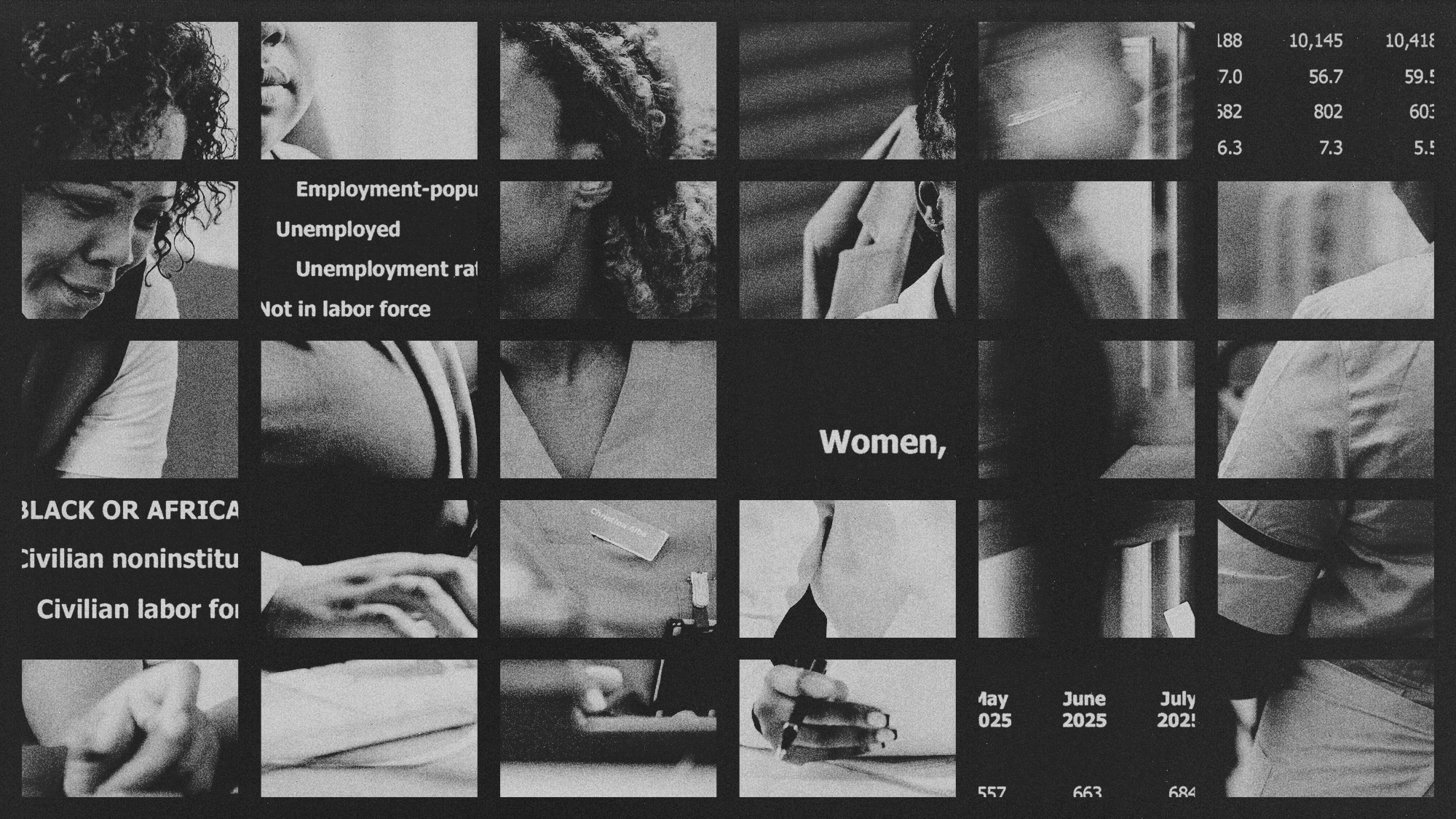 Black women are being pushed out of the workforce en masse
Black women are being pushed out of the workforce en masseIN THE SPOTLIGHT Employment data shows hundreds of thousands of Black women have left the labor market over the past few months. What's behind this mass exodus?
-
 New White House guidance means federal employees could be hearing more religious talk at work
New White House guidance means federal employees could be hearing more religious talk at workThe Explainer Employees can now try to persuade co-workers that their religion is 'correct'
-
 What difference will the 'historic' UK-Germany treaty make?
What difference will the 'historic' UK-Germany treaty make?Today's Big Question Europe's two biggest economies sign first treaty since WWII, underscoring 'triangle alliance' with France amid growing Russian threat and US distance
-
 Is the G7 still relevant?
Is the G7 still relevant?Talking Point Donald Trump's early departure cast a shadow over this week's meeting of the world's major democracies
-
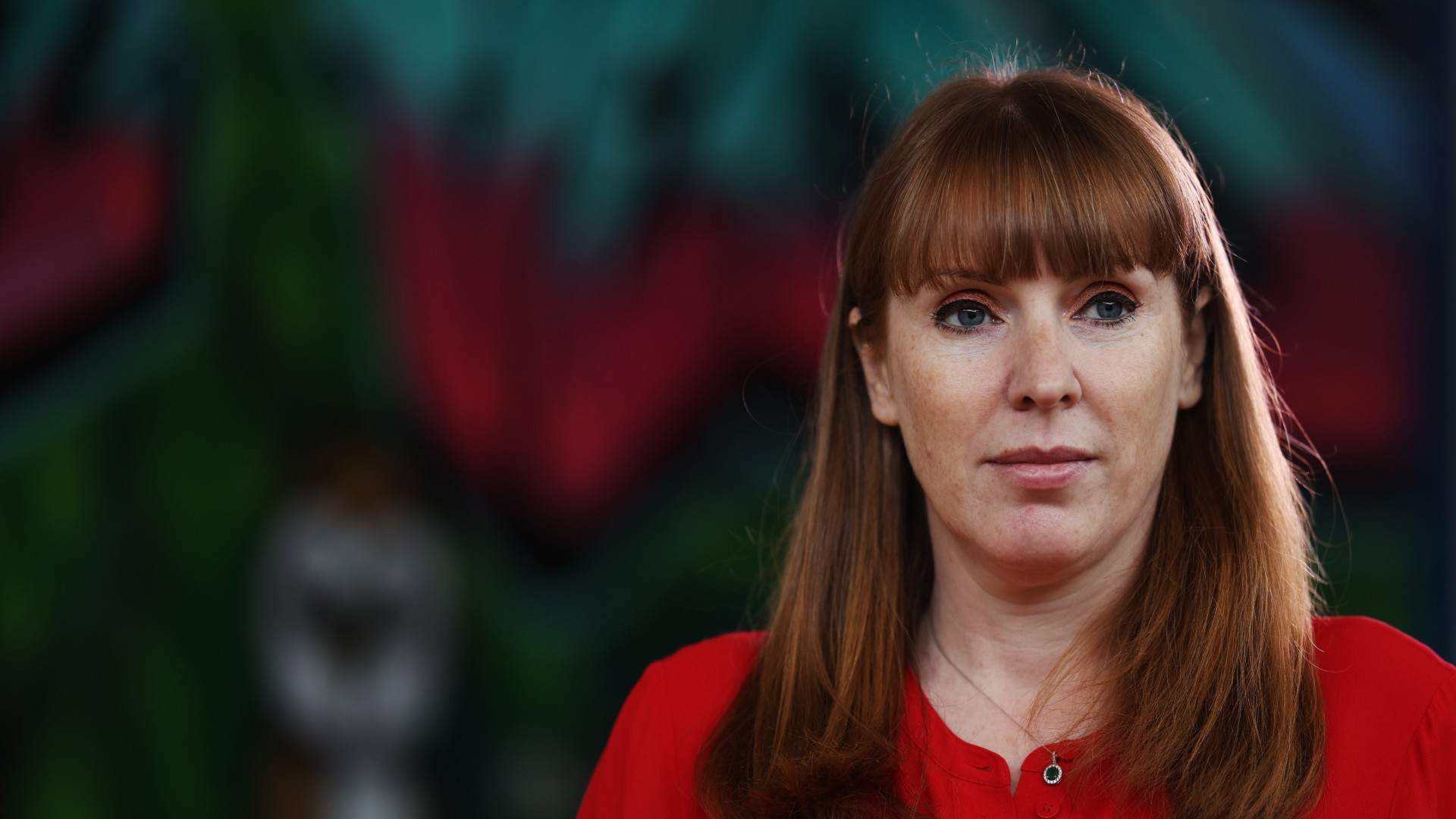 Angela Rayner: Labour's next leader?
Angela Rayner: Labour's next leader?Today's Big Question A leaked memo has sparked speculation that the deputy PM is positioning herself as the left-of-centre alternative to Keir Starmer
-
 Is Starmer's plan to send migrants overseas Rwanda 2.0?
Is Starmer's plan to send migrants overseas Rwanda 2.0?Today's Big Question Failed asylum seekers could be removed to Balkan nations under new government plans


